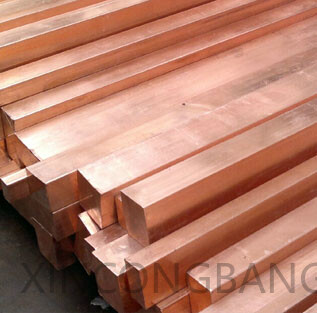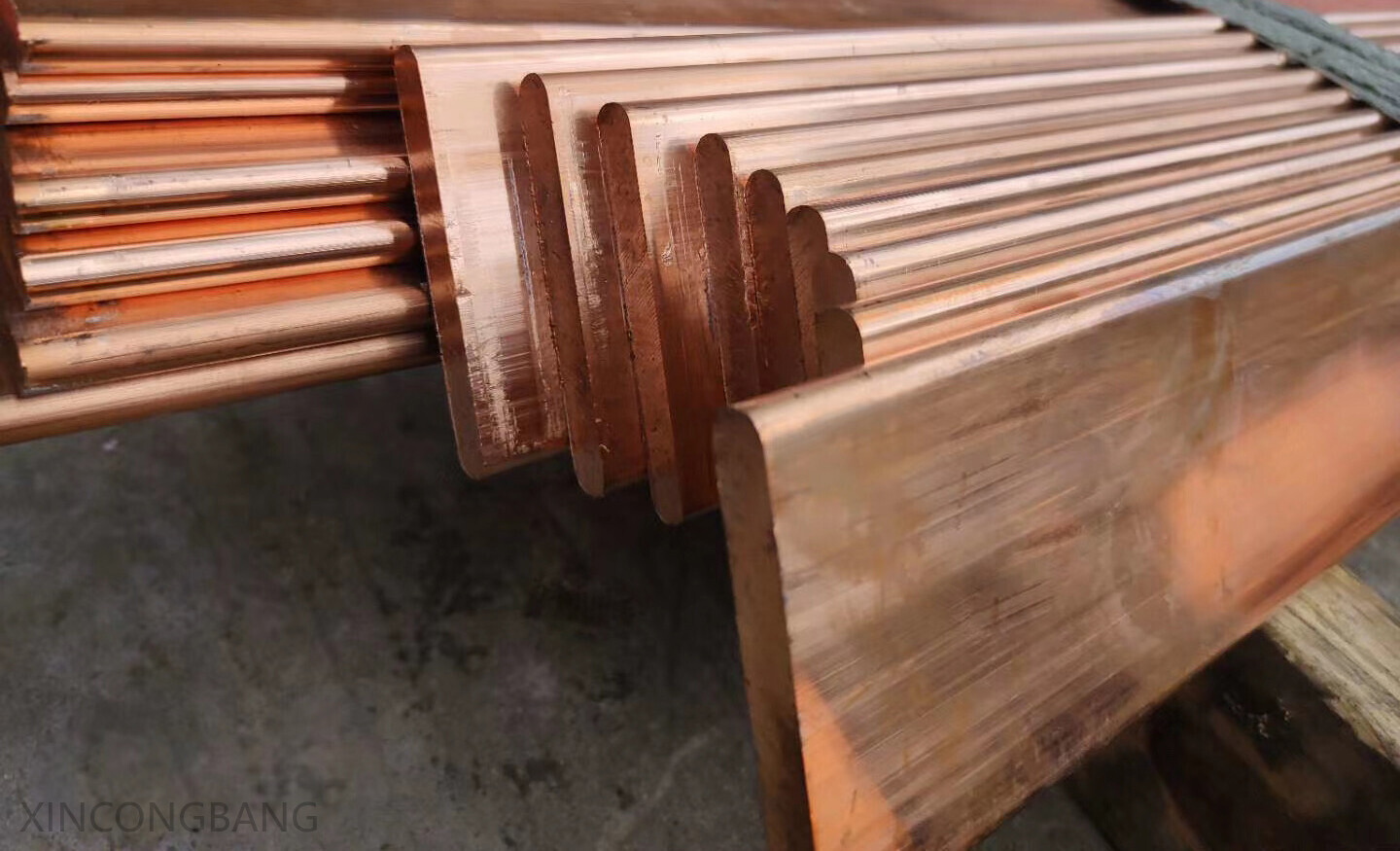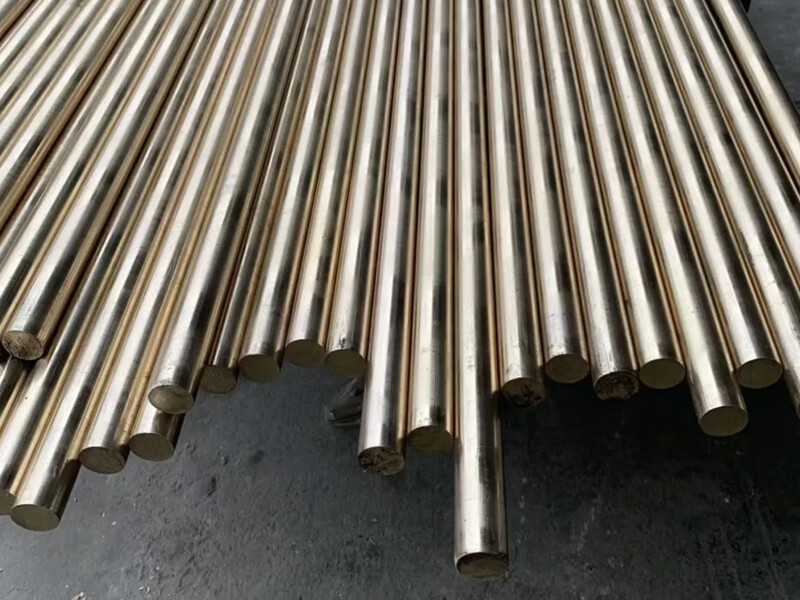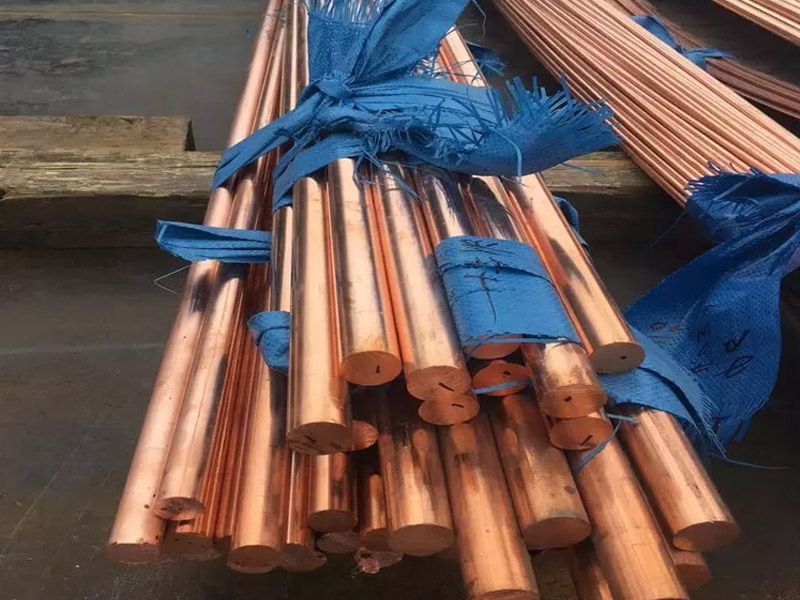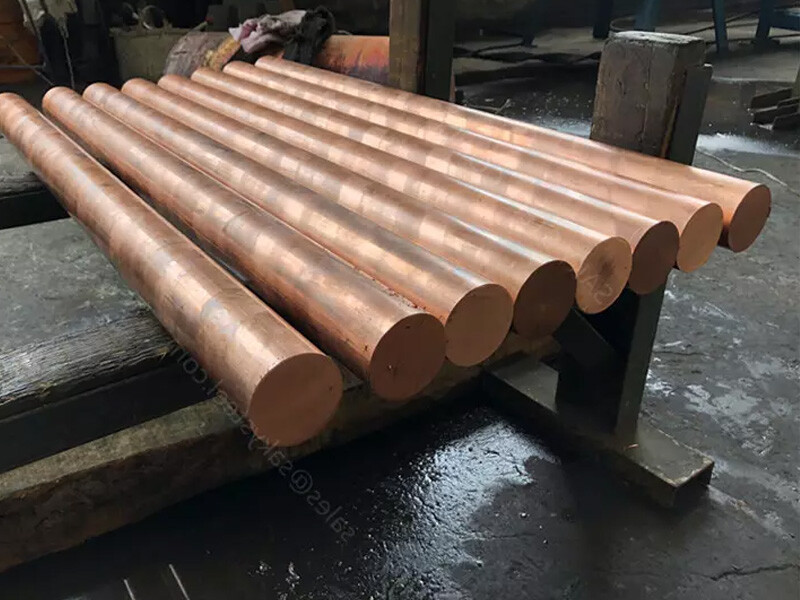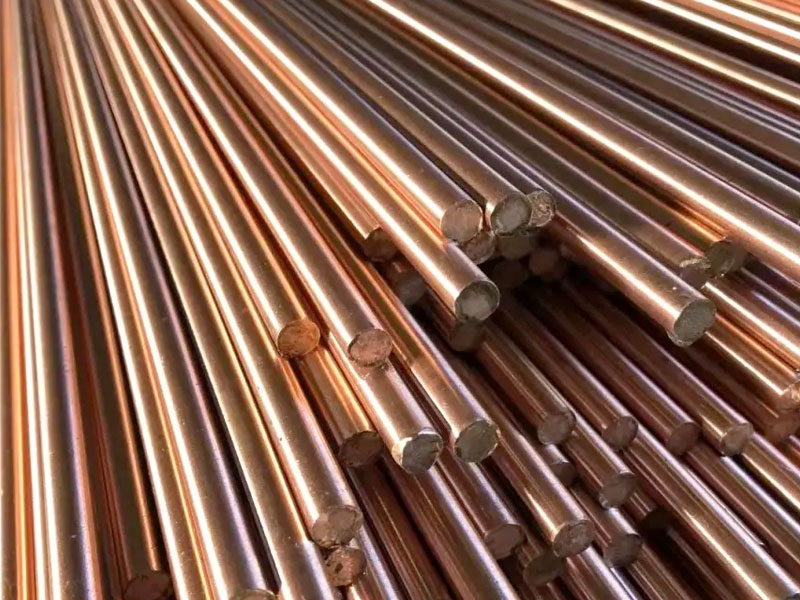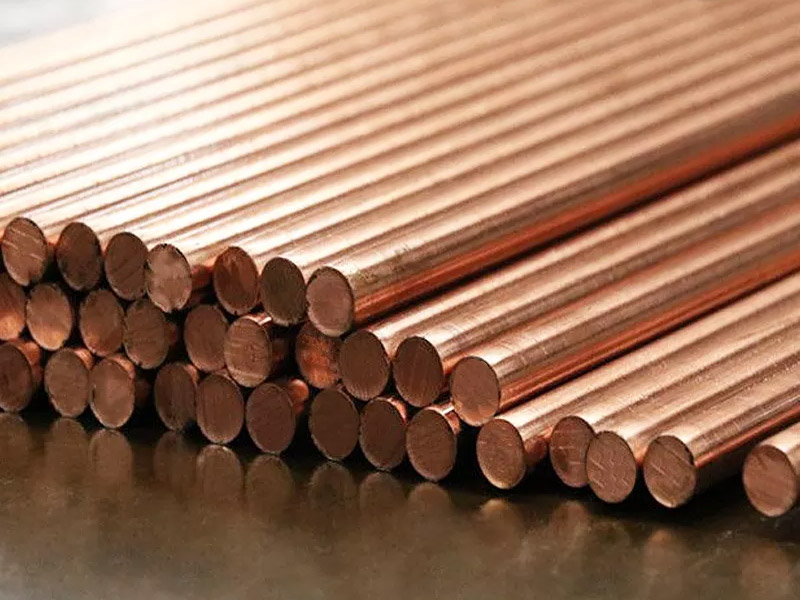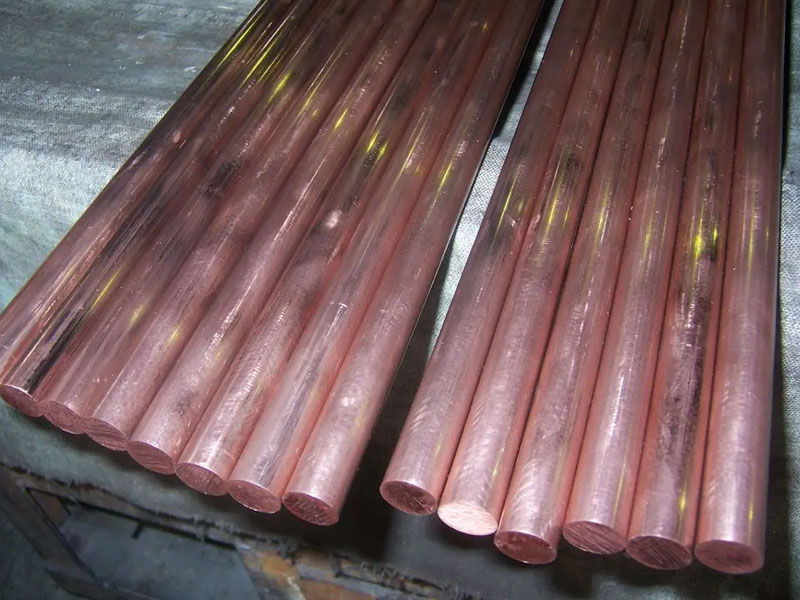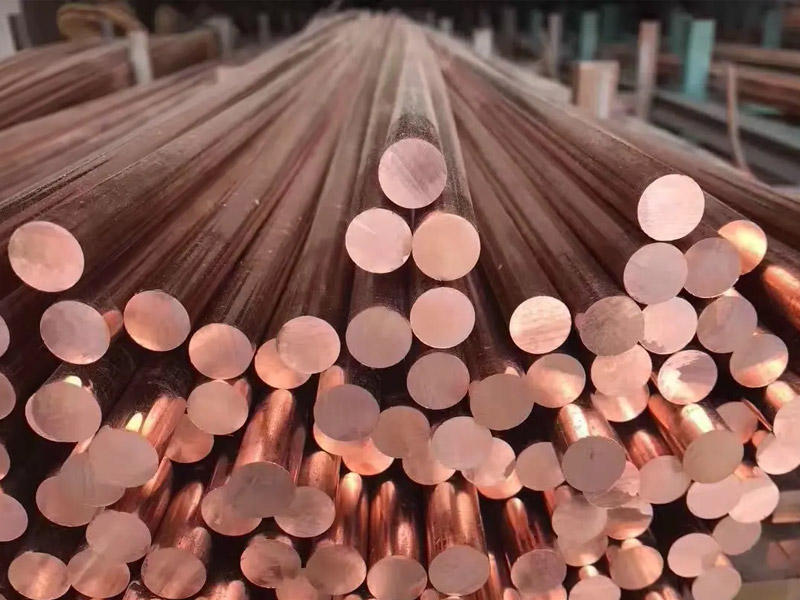Detailed Dimensional Range
C15000 copper rods are typically supplied in straight lengths with the following standardized dimensions:
- Diameter: 3 mm to 120 mm.
- Length: 500 mm to 5,000 mm.
- Tolerances:
- Diameter: ±0.1 mm (for diameters ≤20 mm) to ±1.5 mm (for diameters >100 mm).
- Straightness: ≤1.5 mm per meter for rods ≥10 mm in diameter.
Note: Custom sizes and tolerances are available based on manufacturer capabilities.
International Standards
C15000 copper rods comply with the following global standards:
European Standards:
- EN 12163: Specifies composition, mechanical properties, and tolerances for copper alloy rods (round, hexagonal, square, or octagonal).
- EN 13601: Covers copper rods for electrical purposes, emphasizing conductivity and dimensional accuracy.
Japanese Industrial Standards (JIS):
- JIS H 3250: Defines requirements for copper alloy rods, including dimensional tolerances and mechanical properties.
Chinese Standards:
- YS/T 759—2011: Governs continuous-cast copper alloy rods, ensuring uniformity and surface quality.
ASTM Standards:
- ASTM B301/B422: Though primarily for copper-nickel-zinc alloys, these standards are referenced for general rod manufacturing practices.
Chemical Composition (ASTM B124/B124M)
C15000 is a zirconium-copper alloy (UNS C15000) with a carefully balanced composition to achieve high electrical conductivity, thermal stability, and mechanical strength. The chemical composition per ASTM standards and related specifications is as follows:
Notes:
- The primary alloying element is zirconium, which forms a fine dispersion of precipitates, improving high-temperature strength and resistance to softening .
- Phosphorus is added to enhance machinability and reduce oxidation during processing .
Mechanical Properties (ASTM Standards)
C15000 exhibits a unique combination of mechanical properties, making it suitable for demanding applications like resistance welding electrodes, electrical connectors, and high-temperature tooling. Key mechanical properties include:
Notes:
- Thermal Stability: Softening temperature is approximately 475°C, retaining strength under cyclic heating .
- Electrical Conductivity: ≥75% IACS (International Annealed Copper Standard), ideal for electrical applications .
- Thermal Conductivity: 330 W/m·K at 20°C, suitable for heat dissipation .
C15000 copper rod production process
Smelting and continuous casting
The production of C15000 copper rods usually uses large-tonnage electric furnaces or industrial frequency furnaces for smelting, and the raw materials include waste copper, waste brass and zinc ingots. During the smelting process, slag removers (such as borax) are added to remove impurities, and the copper water is introduced into the insulation furnace through a dark pipe. Subsequently, the horizontal continuous casting technology is used to continuously cast copper ingots. This technology has the advantages of high production efficiency, stable ingot quality, and environmental protection. A single furnace can produce multiple copper rods of different specifications at the same time.
Extrusion and drawing
The ingot is formed by hot extrusion and processed into a copper rod of the desired shape by a large-tonnage reverse extruder. This process can significantly improve the density and surface smoothness of the material. Subsequently, the combined drawing technology is used for stretching and straightening to ensure the dimensional accuracy and mechanical properties of the copper rod. Some processes will also combine cold processing (such as cold drawing) to further improve the strength and hardness.
Heat treatment and surface treatment
Annealing may be performed during the production process to eliminate internal stress, and the oxide layer may be removed by skinning. After cold working, C15000 copper rods usually need to be aged (such as high-temperature heat treatment above 500℃) to optimize their high-temperature softening resistance.
Product advantages of C15000 copper rods
High strength and high hardness
By adding zirconium (Zr) and chromium (Cr) to form a strengthening phase, the tensile strength after cold working can reach 428 MPa and the compressive strength can reach 386 MPa, which is far higher than pure copper. Its hardness (HRB 70-86) and wear resistance are excellent, suitable for high-load scenarios such as resistance welding electrodes.
Excellent electrical and thermal conductivity
Despite the presence of alloy elements, C15000 still maintains high electrical conductivity (>75% IACS) and thermal conductivity, which is particularly suitable for applications that require efficient electrical conduction, such as electrical switches and power transmission equipment.
High temperature stability and creep resistance
The softening temperature exceeds 500℃, which is much higher than pure copper (200℃) and silver-containing copper (350℃), and can still maintain stable performance in high temperature environments. The addition of zirconium also enhances the high-temperature creep resistance.
Corrosion and fatigue resistance
It has good tolerance to corrosive media such as seawater and industrial environment, which prolongs the service life in marine engineering. The fatigue strength after cold working reaches 200 MPa at 10^8 cycles, showing excellent fatigue resistance.
Processing adaptability
It has excellent cold working properties and can be formed by conventional metal processing technology; it has good hot working properties and is suitable for the manufacture of complex parts. Optimizing cutting parameters (such as 1200 rpm speed and 0.06 mm/rev feed) can further improve the processing surface quality.
Wide application areas
It is mainly used in resistance welding electrodes, submarine cables, ship electrical systems, etc., and shows potential in aerospace and high-energy physics accelerator structures.
Q1:Do you provide samples? Is it free or extra?
A1:Yes, we can provide samples free of charge and the customer will pay the freight.
Q2:What if I don't have export experience ?
A2:We have reliable forwarder agent which can ship items to you by sea/air/Express to your doorstep. Any way, we will help you choose the most suitable shipping service.
Q3:How long is your lead time?
A3:If it is in stock, it is usually 5-10 days. Or, if there is no inventory, 15 days, depending on the quantity.
Q4:What are your terms of payment?
A4:30% T/T deposit in advance, 70% T/T balance within 5 days after B/L copy, 100%.Irrevocable L/C at sight, 100% Irrevocable L/C after receive B/L 30-120 days, O/A.
Q5:How is your technical support?
A5:We provide lifetime online support through Whatsapp/ Skype/ Wechat/ Email. Any problem after delivery, we will offer you call anytime.
Welcome To Your Inquiry
What can we help you?
RELATED PRODUCTS

